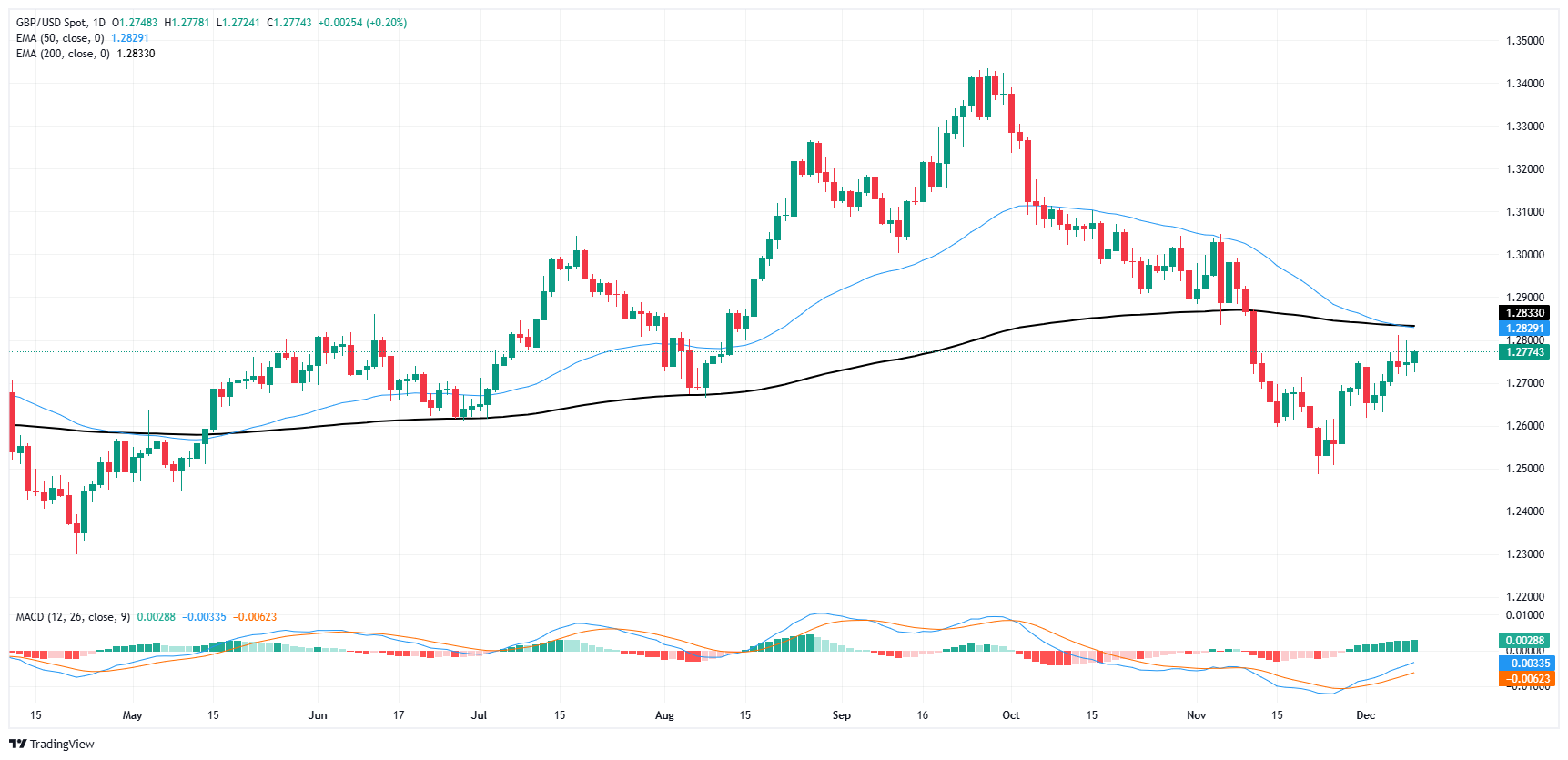GBP/USD tries to push north through near-term congestion
- GBP/USD gained nearly one-fifth of a percent on Tuesday.
- Cable bulls are testing the high end of recent consolidation.
- Greenback traders will be hunkering down ahead of Wednesday’s US CPI.
GBP/USD found some room on the high side on Tuesday, gaining almost 0.2% and inching back toward the 1.2800 handle, grasping for the key price level that has flummoxed bullish momentum in recent days. Cable traders are buckling up for the wait to Wednesday’s US Consumer Price Index (CPI) inflation update.
GBP-centric data is limited this week, with the UK showing strictly mid-tier economic releases on the calendar, leaving Cable to singularly face this Wednesday’s CPI inflation print, which serves as one of the last key data releases before the Federal Reserve’s (Fed) last policy meeting in 2024. Signs that progress on inflation has stalled could kill hopes for a third consecutive rate cut on December 18. At the current cut, Wednesday’s US CPI inflation for November is expected to rise slightly to 2.7% YoY from the previous 2.6%, while core annualized CPI is forecast to hold steady at 3.3%.
According to the CME’s FedWatch Tool, rate traders are pricing on 85% odds of one last quarter-point rate cut for the year.
GBP/USD price forecast
GBP/USD is battling near-term chart churn near the 1.2800 handle, with the pair suspending in a dead zone just south of the 200-day Exponential Moving Average (EMA) near 1.2830. Price action has made a slow, trudging recovery after bottoming out near 1.2500 in late November, but bullish momentum is running into trouble and another leg lower could be chalked into the chart if the 200-day EMA stops being a target and becomes a hard technical barrier.
GBP/USD daily chart
Pound Sterling FAQs
The Pound Sterling (GBP) is the oldest currency in the world (886 AD) and the official currency of the United Kingdom. It is the fourth most traded unit for foreign exchange (FX) in the world, accounting for 12% of all transactions, averaging $630 billion a day, according to 2022 data. Its key trading pairs are GBP/USD, also known as ‘Cable’, which accounts for 11% of FX, GBP/JPY, or the ‘Dragon’ as it is known by traders (3%), and EUR/GBP (2%). The Pound Sterling is issued by the Bank of England (BoE).
The single most important factor influencing the value of the Pound Sterling is monetary policy decided by the Bank of England. The BoE bases its decisions on whether it has achieved its primary goal of “price stability” – a steady inflation rate of around 2%. Its primary tool for achieving this is the adjustment of interest rates. When inflation is too high, the BoE will try to rein it in by raising interest rates, making it more expensive for people and businesses to access credit. This is generally positive for GBP, as higher interest rates make the UK a more attractive place for global investors to park their money. When inflation falls too low it is a sign economic growth is slowing. In this scenario, the BoE will consider lowering interest rates to cheapen credit so businesses will borrow more to invest in growth-generating projects.
Data releases gauge the health of the economy and can impact the value of the Pound Sterling. Indicators such as GDP, Manufacturing and Services PMIs, and employment can all influence the direction of the GBP. A strong economy is good for Sterling. Not only does it attract more foreign investment but it may encourage the BoE to put up interest rates, which will directly strengthen GBP. Otherwise, if economic data is weak, the Pound Sterling is likely to fall.
Another significant data release for the Pound Sterling is the Trade Balance. This indicator measures the difference between what a country earns from its exports and what it spends on imports over a given period. If a country produces highly sought-after exports, its currency will benefit purely from the extra demand created from foreign buyers seeking to purchase these goods. Therefore, a positive net Trade Balance strengthens a currency and vice versa for a negative balance.
